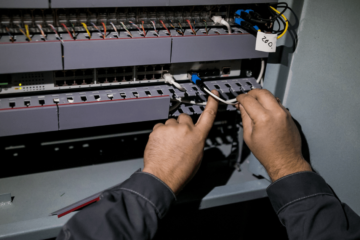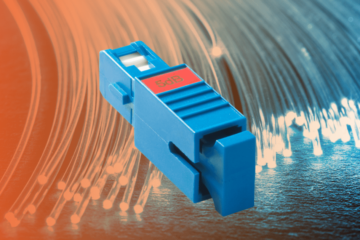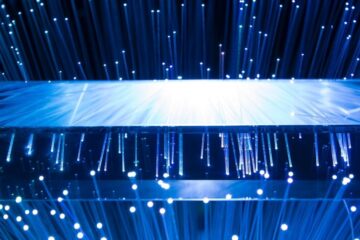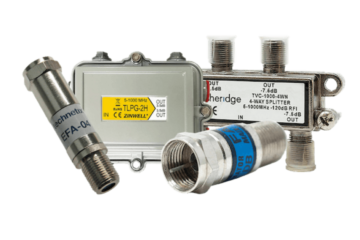
Navigating the intricate landscape of modern telecommunications requires a keen understanding of the underlying technologies that power our digital connectivity. Fiber optic networks, in particular, serve as the backbone of high-speed data transmission, enabling the seamless flow of information across vast distances. However, even the most robust networks are susceptible to issues that can disrupt operations and compromise performance. In this article, we’ll explore common challenges encountered in fiber optic networks and delve into effective troubleshooting strategies to address them.
Understanding Fiber Optic Networks
Fiber optic networks represent the pinnacle of data transmission technology, leveraging the unique properties of light to transmit data over long distances with unparalleled speed and reliability. These networks consist of thin strands of glass or plastic fibers that carry light signals encoded with data. Unlike traditional copper-based networks, fiber optic networks offer significantly higher bandwidth capacity and immunity to electromagnetic interference, making them the preferred choice for high-speed internet, telecommunication, and data center applications.
Common Issues in Fiber Optic Networks
- Signal Loss: Signal loss, also known as attenuation, occurs when light signals weaken as they travel through fiber optic cables. Several factors can contribute to signal loss, including cable bending, poor connector alignment, and splicing imperfections. Signal loss can degrade network performance, leading to slow data transmission speeds and reduced connectivity.
- Fiber Breaks: Fiber breaks refer to physical damage sustained by fiber optic cables, resulting in interrupted signal transmission and communication along affected cables. Fiber breaks can occur due to various reasons, such as accidental cable cuts, rodent damage, or construction-related incidents. Identifying and repairing fiber breaks promptly is crucial to restoring network functionality and preventing service disruptions.
- Connector Issues: Connectors play a vital role in fiber optic networks, facilitating the connection between fiber optic cables and network devices. However, connectors are susceptible to contamination, misalignment, and damage, which can compromise signal transmission and connectivity. Common connector issues include dirty or damaged connector end faces, improper mating, and insufficient physical contact. Addressing connector issues requires thorough cleaning, inspection, and realignment to ensure optimal signal transmission.
- Dispersion: Dispersion refers to the spreading of light pulses as they travel through fiber optic cables, which can affect signal quality and transmission distance. There are two main types of dispersion: chromatic dispersion and modal dispersion. Chromatic dispersion occurs when different wavelengths of light travel at different speeds through the fiber, causing signal distortion. Modal dispersion occurs when light signals take different paths (modes) within the fiber, resulting in signal spreading. Minimizing dispersion is essential for maintaining signal integrity and maximizing transmission efficiency.
- Network Congestion: Network congestion occurs when the demand for network resources exceeds available capacity, resulting in slowdowns and decreased performance. In fiber optic networks, congestion can occur at various points, including network nodes, routers, and switches. Common causes of network congestion include heavy traffic loads, insufficient bandwidth, and inefficient network routing. Mitigating network congestion requires proactive capacity planning, traffic management, and network optimization strategies.

Troubleshooting Strategies
- Visual Inspection: Visual inspection involves physically examining fiber optic cables, connectors, and splice points to identify any signs of damage, contamination, or misalignment. Visual inspection should be performed regularly using specialized inspection tools such as fiber optic microscopes and endface inspection probes. By detecting and addressing potential issues early, visual inspection helps prevent signal degradation and service interruptions.
- Power Meter Testing: Also known as optical power measurement, Power Meter Testing is used to measure the strength of light signals transmitted through fiber optic cables. Power meters quantify optical power levels in decibels (dB) and provide valuable insights into signal strength, attenuation, and losses. By conducting power meter testing at various points along the network, telecom professionals can pinpoint areas of signal loss or degradation and take corrective action to optimize signal transmission.
- OTDR Testing: Optical Time Domain Reflectometer testing is a diagnostic technique used to analyze the performance of fiber optic cables and detect anomalies within the fiber optic network. OTDRs emit short pulses of light into the fiber and measure the reflected light signals to create a profile of the fiber’s attenuation characteristics. OTDR testing enables telecom professionals to identify issues such as fiber breaks, splice losses, and connector reflections, allowing for targeted troubleshooting and repair.
- Connector Cleaning and Realigning: Proper connector cleaning and realignment are essential for ensuring reliable signal transmission and connectivity in fiber optic networks. Contaminated or misaligned connectors can cause signal loss, insertion loss, and increased reflectance, leading to performance issues and network downtime. Telecom professionals should regularly clean and inspect connector end faces using lint-free wipes and optical-grade cleaning solutions, including fiber cleaning pens. Additionally, connectors should be carefully aligned and mated to minimize signal loss and maximize optical performance.
- Replacement and Repair: In cases where troubleshooting efforts reveal irreparable damage or degradation, replacement or repair of fiber optic components may be necessary to restore network functionality. Damaged fiber optic cables, connectors, and splice points should be replaced with new, high-quality components to ensure reliable signal transmission and prevent future issues. Splice closures and protective enclosures should be inspected and repaired as needed to safeguard fiber optic cables from environmental hazards and physical damage.
Conclusion
Troubleshooting common issues in fiber optic networks requires a comprehensive understanding of network architecture, fiber optic technology, and diagnostic techniques. By proactively identifying and addressing issues such as signal loss, fiber breaks, connector problems, dispersion, and network congestion, telecom professionals can ensure the reliability, performance, and longevity of fiber optic networks. Through visual inspection, power meter testing, OTDR testing, connector cleaning and realignment, and timely replacement and repair, telecom professionals can maintain optimal network performance and deliver seamless connectivity to end users. As fiber optic networks continue to evolve and expand to meet growing demands for high-speed communication and data transmission, effective troubleshooting strategies will remain essential for ensuring network reliability, efficiency, and resilience in the face of emerging challenges and opportunities.
Related articles: Fiber Optic Network Construction: 5 Steps for a Successful Project









